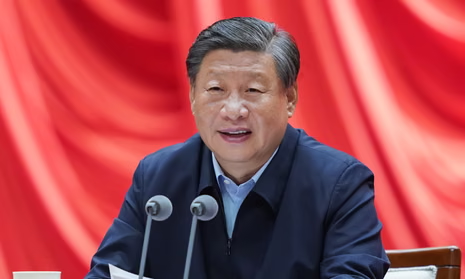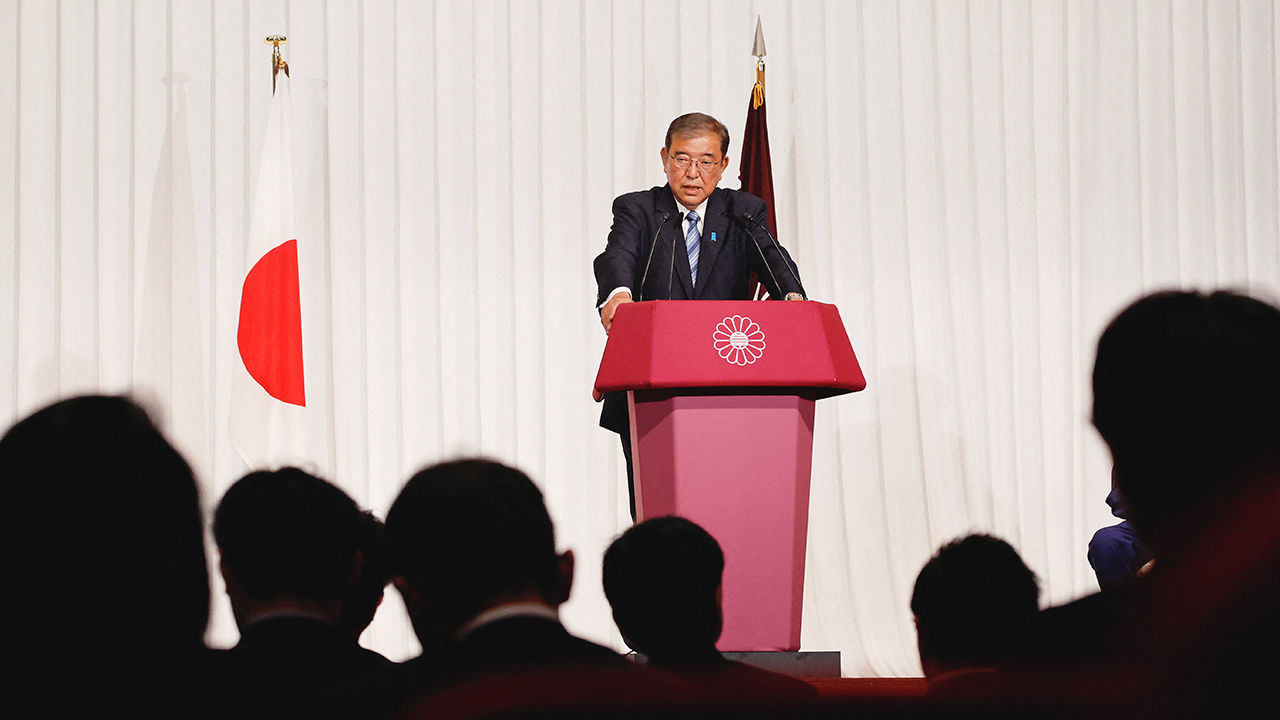In 2021, Chinese President Xi Jinping doubled down on his vision of “common prosperity,” a policy aimed at reducing inequality and uplifting the nation’s lower and middle classes. It’s an ambitious goal, promising shared wealth and opportunity in a country where billionaires coexist with millions earning less than $154 a month. But as I explored this topic, I couldn’t help but feel caught in a paradox, much like Joseph Heller’s Catch-22. The very mechanisms driving China’s economic growth—particularly its property sector—are both the backbone of household wealth and a barrier to the equitable society Xi envisions. Let’s unpack this complex issue, diving into its origins, challenges, and implications with a lens that’s both critical and relatable.
What Is “Common Prosperity” and Why Does It Matter?
Xi Jinping’s “common prosperity” is a cornerstone of modern Chinese policy, rooted in the Communist Party’s socialist ideals. It’s not just about economic growth but about ensuring that growth benefits everyone, not just the elite. Think of it as slicing the economic pie more evenly—addressing the stark contrast between China’s ultra-rich and its 600 million low-income citizens. This matters because inequality fuels social unrest, and for a government prioritizing stability, that’s a red flag.
Historical Context: From Deng to Xi
The concept isn’t new. Deng Xiaoping, the architect of China’s economic boom, once said it was fine for some to “get rich first” to pull others up later. Fast-forward to 2021, and Xi flipped the script, emphasizing that wealth must now be shared. I remember reading about China’s poverty eradication success in 2020—it was a global milestone. But the reality? Extreme poverty may be gone, but millions still struggle, and Xi’s policies aim to bridge that gap.
The Core Goals of Common Prosperity
The policy focuses on three main pillars:
- Reducing Income Inequality: Regulating excessive incomes and encouraging high earners to “give back” through donations or taxes.
- Strengthening Social Safety Nets: Improving access to healthcare, education, and housing for the masses.
- Promoting High-Quality Development: Shifting from speculative industries like real estate to innovation-driven sectors.
These goals sound noble, but here’s the catch: achieving them without destabilizing the economy is like walking a tightrope over a stormy sea.
The Property Sector: China’s Economic Backbone and Achilles’ Heel
China’s property market is a beast. It accounts for nearly 30% of GDP, far surpassing the role of real estate in pre-bubble economies like Japan or the U.S.. For many Chinese families, property is their primary wealth asset—think of it as their version of a 401(k). But with housing costs in Tier-1 cities like Beijing reaching 55 times the average annual wage, affordability is a pipe dream for most.
The Housing Glut Paradox
Picture this: China has up to 90 million uninhabited apartments. That’s not a typo—90 million! It’s like building entire ghost cities, a surreal image I first encountered in a documentary about China’s urban sprawl. This glut erodes productivity, tying up capital that could be invested in innovation or infrastructure. Xi’s push for “high-quality development” calls for deflating this bubble, but here’s the rub: doing so risks crashing the very wealth that underpins household prosperity.
Local Government Dependence on Land Sales
Local governments in China rely heavily on land sales for revenue—up to 40% in some provinces. In 2021, land sales dropped by 20% or more in 13 provinces, leaving local budgets in shambles. I recall a news story about officials in Bazhou resorting to arbitrary fines to make ends meet—desperate times call for desperate measures. Without a robust property sector, funding “common prosperity” initiatives like better schools or healthcare becomes a pipe dream.
The Catch-22: Balancing Wealth and Equality
Here’s where the Catch-22 kicks in: exorbitant housing costs are antithetical to common prosperity, yet they’re the foundation of household wealth. Pop the property bubble, and you make homes more affordable but tank family savings. Keep prices high, and you exclude the middle and lower classes from the housing market, perpetuating inequality. It’s a dilemma that would make even Yossarian from Catch-22 scratch his head.
Xi’s Proposed Solutions
Xi has floated several ideas to navigate this mess:
- Property Tax: A tax on property could stabilize prices and provide local governments with a new revenue stream. But it’s politically tricky—nobody likes new taxes, especially the wealthy.
- Regulatory Crackdowns: Beijing has cracked down on real estate giants like Evergrande, which faced a debt crisis in 2021. These moves aim to curb speculative investment but have led to construction halts and economic jitters.
- Hukou Reform: Easing the household registration system could give migrant workers access to urban benefits, but it’s costly and faces resistance from city dwellers protective of their privileges.
Each solution has trade-offs. A property tax might work in theory, but implementing it without sparking backlash is like trying to herd cats in a thunderstorm.
Comparison: China vs. OECD Nations
| Aspect | China | OECD Nations |
|---|---|---|
| Property Sector Share | ~30% of GDP, highly speculative | ~10-15% of GDP, more regulated |
| Housing Affordability | Up to 55x average wage in Tier-1 cities | Typically 5-10x average wage |
| Social Safety Nets | Underdeveloped, reliant on local funding | Robust, funded by diverse taxes |
| Income Inequality | High, with 600M earning <$154/month | Moderate, with stronger welfare systems |
China’s unique challenge lies in its less developed safety nets and poorer households, making the stakes of reform higher than in wealthier nations.
The Demographic Crisis: A Ticking Time Bomb
China’s aging population and low birth rate (0.75% in 2021) add another layer to the Catch-22. Fewer workers mean less economic growth, and without growth, funding common prosperity becomes even harder. I think of my friend Li, who lives in Shanghai and decided against having kids because of high living costs. “Why bring a child into a world where I can’t afford a home?” she once told me. That sentiment is widespread, and it’s a problem Xi can’t ignore.
Policy Responses to Demographic Challenges
To address this, China has relaxed its child limits to three per couple and offered incentives like childcare subsidies. But as Yueran Zhang notes, economic hardship and lack of social support keep birth rates low. Common prosperity aims to fix this by making life more affordable, but again, it’s a chicken-and-egg problem: you need economic stability to fund these programs, but stability is elusive without a growing workforce.
The Global Implications: Common Prosperity and the Belt and Road
Xi hasn’t limited common prosperity to China’s borders. He’s linked it to the Belt and Road Initiative (BRI), framing it as a tool for global poverty reduction. For instance, at the 2021 Forum on China-Africa Cooperation, Xi pledged 10 poverty reduction projects. It’s a clever move—aligning domestic goals with international soft power. But as someone who’s traveled in BRI countries, I’ve seen mixed results: some projects empower locals, while others prioritize Chinese interests.
Pros and Cons of Internationalizing Common Prosperity
Pros:
- Enhances China’s global image as a leader in poverty reduction.
- Aligns BRI projects with sustainable development goals.
- Encourages Chinese firms to train local workers, boosting human capital.
Cons:
- Risks overpromising and underdelivering, damaging credibility.
- May divert resources from domestic needs, straining China’s economy.
- Could be seen as a geopolitical tool, raising suspicions abroad.
People Also Ask (PAA)
What is China’s common prosperity policy?
It’s a policy to reduce income inequality and improve living standards for all Chinese citizens, emphasizing social safety nets and sustainable growth.
How does the property sector affect common prosperity?
The property sector fuels household wealth but also drives inequality through unaffordable housing, creating a paradox for Xi’s goals.
Where can I learn more about China’s economic policies?
Check reputable sources like the Lowy Institute or Brookings Institution for in-depth analysis.
What are the best tools for tracking China’s economic reforms?
Use platforms like Bloomberg, Reuters, or Google Trends for real-time data. For academic insights, JSTOR or RePEc are excellent.
The Human Cost: Stories from the Ground
I once met a street vendor in Beijing, Mr. Chen, who dreamed of owning a small apartment for his family. He worked 12-hour days but couldn’t afford even a down payment. “Common prosperity sounds nice,” he told me with a wry smile, “but I’m still waiting for my share.” His story isn’t unique—millions feel left behind despite China’s economic miracle. These voices remind us that policies aren’t just numbers; they shape lives.
Can China Escape the Catch-22?
Xi’s vision is bold, but the path is fraught. Deflating the property bubble risks economic instability, while maintaining it entrenches inequality. Hukou reforms and property taxes could help, but they require political courage and massive funding. As Roland Rajah and Alyssa Leng note, the trajectory of common prosperity is uncertain, evolving with China’s economic realities.
A Path Forward?
If I were advising Xi (and let’s be honest, that’s a big “if”), I’d suggest a phased approach:
- Pilot Property Taxes: Start in select cities to test impact and refine the policy.
- Invest in Social Safety Nets: Use central government funds to ease local budget strains.
- Promote Innovation: Shift capital from real estate to tech and green energy, aligning with high-quality development goals.
It’s not a perfect fix, but it’s a start. The alternative—ignoring the Catch-22—risks social unrest and economic stagnation.
FAQ
What is the main goal of common prosperity?
The goal is to reduce income inequality, improve social services, and ensure shared economic growth across all classes.
Why is the property sector a problem for common prosperity?
High housing costs exclude many from wealth-building, while a market slowdown threatens local government budgets needed for social programs.
How does common prosperity affect global markets?
Regulatory crackdowns and a focus on domestic priorities could reduce China’s outbound investment, impacting global trade.
Is common prosperity achievable?
It’s possible but challenging, requiring delicate balancing of economic stability and equitable reforms.
Where can I find reliable data on China’s economy?
Sources like the World Bank and IMF offer credible data, alongside think tanks like the Lowy Institute.
Conclusion: A Tightrope Walk for China’s Future
China’s “common prosperity” is a noble yet perplexing endeavor. It’s a policy born of necessity, addressing inequality in a nation that’s both a global powerhouse and a land of stark contrasts. But the Catch-22—relying on a problematic property sector while trying to dismantle its excesses—makes it a high-stakes gamble. As I reflect on Mr. Chen’s weary optimism, I’m reminded that behind the policy debates are real people hoping for a fairer shot. Whether Xi can deliver remains an open question, but one thing’s clear: the world is watching.



